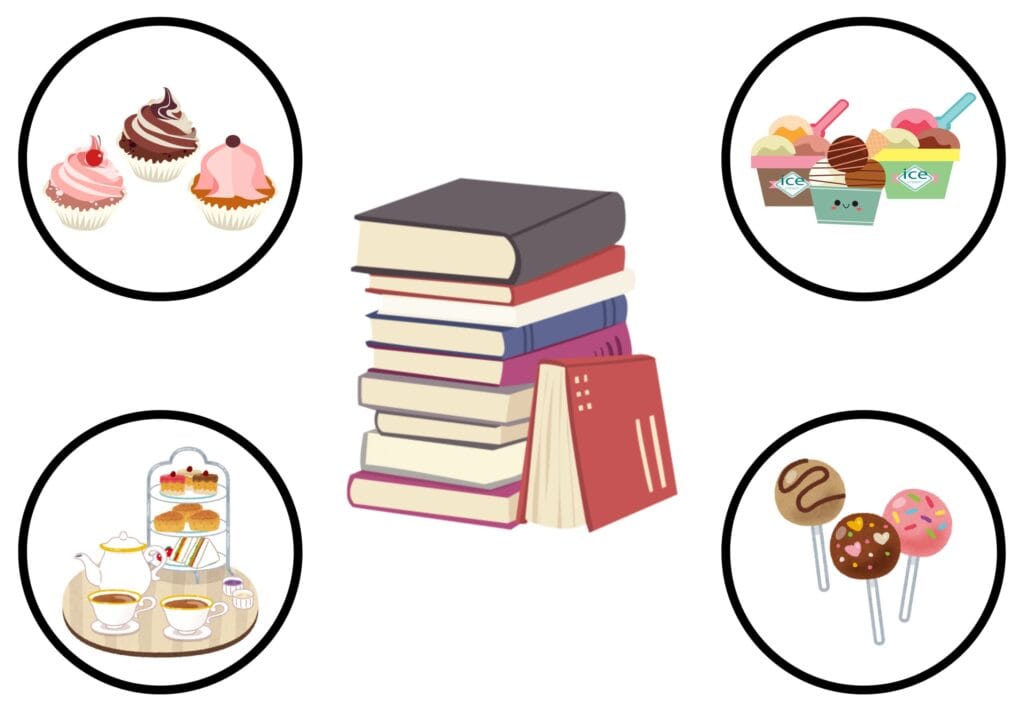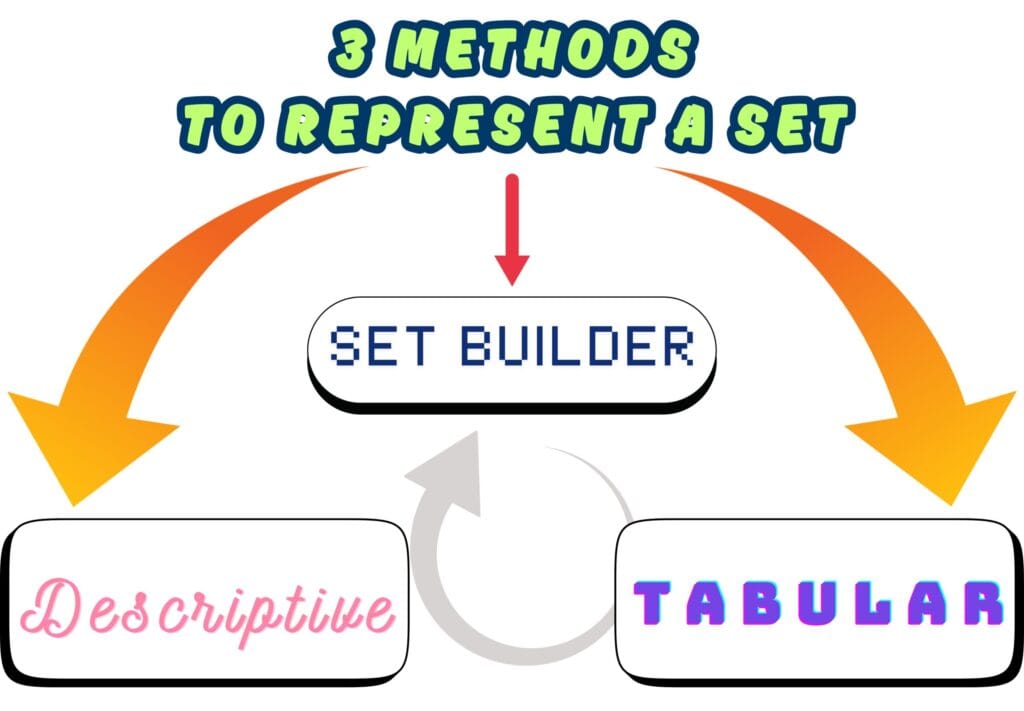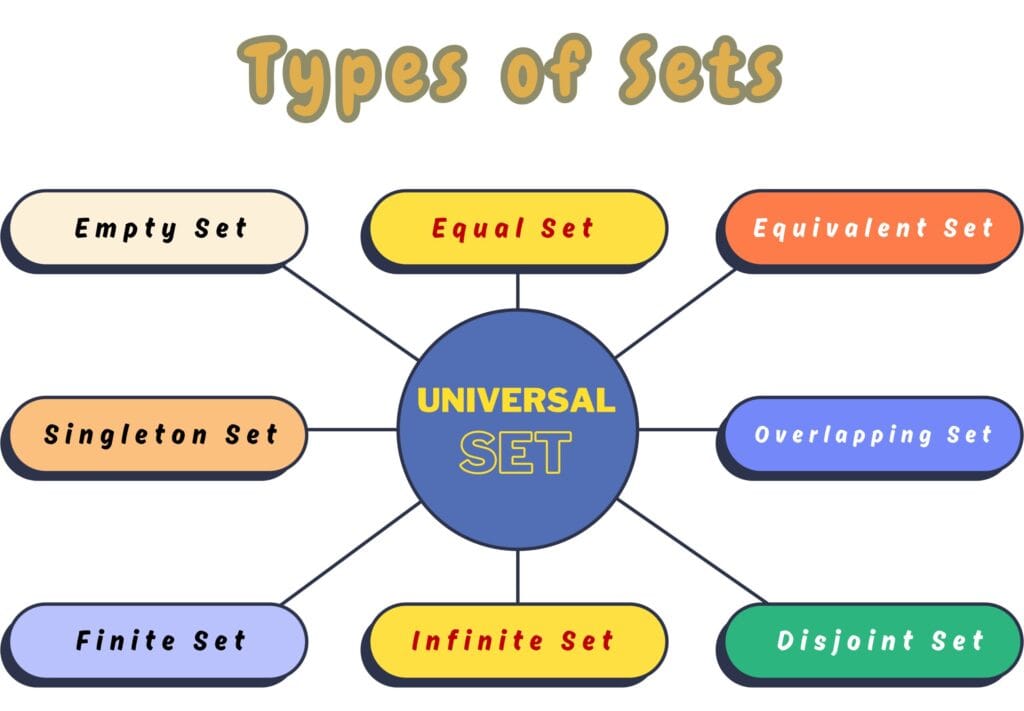To know about “what is a set in mathematics?” is beneficial and compulsory to advance in higher concepts like relations, functions, probability, and logic.
Table of Contents
Introduction
In mathematics, the concept of sets is fundamental. Sets are used to group objects, numbers, or symbols that share a common property. In real life, you often hear about words like tea set, ice cream set, set of books, etc. All these cases refer to the collection of things.
In mathematics, the same idea applies —meaning a set is simply a collection of objects. Here, you will explore what sets are, how they are written, and the various types of sets that exist.

What is a Set?
A set can be defined as:
“A collection of well-defined and distinct objects.”
Here are 3 important things to notice:
- Collection: Objects can be grouped.
- Well-defined: There should be no ambiguity about what and who belongs to the set.
- Distinct: All elements must be unique — no repetition is allowed.
Elements of a Set
The objects in a set are called elements of a set. They are also known as members or entries of a set. The elements of a set can be:
- numbers
- alphabets
- mathematical or Greek symbols
Symbol of Element
The symbol ![]() is used to show that an element belongs to a set.
is used to show that an element belongs to a set.
Example
If ![]() is an element of set
is an element of set ![]() , you can write it as
, you can write it as ![]() .
.
How to Write a Set?
Here are the conventions for writing sets:
- Set names are represented by capital letters (e.g., A, B, C, …).
- Elements are written as lowercase letters, numbers, or symbols, separated by commas, and enclosed in curly brackets {}.
- The order of elements does not matter.
- Repetition is not allowed.
Example
![]()
Validity Check
| Set | Description | Is it a Set? |
| A = {a, e, i, o, u} | Well-defined and distinct | Yes |
| B = {e, l, e, p, h, a, n, t} | Well-defined but not distinct | No |
| C = {top mathematicians} | Collection but not well-defined | No |
| D = Set of fire | Not a collection | No |
3 Methods to Represent a Set
Mainly, there are 3 methods to express a set.

1. Descriptive Method
The descriptive method is a way to express a set of words or a sentence.
Example
- A = Set of first five natural numbers
- B = Set of rainbow colour names
2. Tabular Method (Roster Method)
It is also known as the “Roster Method” or “Listing Method” and represents elements explicitly within curly brackets.
Example
3. Set Builder Notation
The method of representation uses mathematical symbols to define elements of a set.
Example
Trick about Set Builder Notation
A set builder notation has three segments to pay attention to.
i. Declaration (such as ![]() )
)
ii. Statement (such as ![]() )
)
iii. Condition (such as ![]() )
)
Note:
- The sign
 – read as ‘and’ – separates the statement from the condition.
– read as ‘and’ – separates the statement from the condition. - The condition may or may not be present in the set builder notation.
Types of Sets
The most common types of sets are given here.

Empty Set vs Singleton Set
| Empty Set (Null Set) | Singleton Set |
| It is a set with no elements. It is denoted by | A set with only one element. |
| For example: | For example: |
Finite Set vs Infinite Set
| Finite Set | Infinite Set |
| It is a set with countable elements. | A set with uncountable elements. |
| For example: | For example: |
Disjoint Sets vs Overlapping Sets
| Disjoint Sets | Overlapping Sets |
| Two sets that have no common elements. | Two sets with at least one common element. |
| For example: None of these elements are the same. | For example: Here, A & C and B & C are overlapping. |
Equivalent Sets vs Equal Sets
| Equivalent Sets | Equal Sets |
| Sets with the same number of elements (not necessarily the same elements). Equivalent sets are represented by | Sets with the same elements, possibly in a different order. The notation used for equal sets is |
| For example: These are equivalent sets. | For example: Here, A & B are equal sets. |
Universal Set
A set that contains all elements under consideration. It is the mother of all sets and is denoted by ![]() .
.
Example
![]()
Key Points to Remember
- Types of elements are based on the number and arrangement of elements.
- A universal set contains elements of all the sets under consideration.
Subsets
If all elements of set A are also in set B, then:
- A is a subset of B
- B is a superset of A
Representation of a Subset
It is represented by:
- Subset:

- Superset:

Note: The one facing the open end is the super set and the one facing the closed end is a subset.

Proper Subset
A subset that does not contain all elements of the parent set. It is denoted by the symbol ![]() .
.
Example

- Proper subsets:

Improper Subset
A subset that is identical to the original set. The notation used for the improper subset is ![]()
Example
How to Write Subsets?
i. The first step is to count the elements.
ii. Secondly, write all possible combinations of the elements — including:
- the empty set

- one-element subsets
- two-element subsets
- three and up to the full set
Some students find it harder to write the subsets and determine the proper and improper subsets. If you do, write in the comment section below and we shall guide you through.
Subset Facts
- Total subsets =

- Proper subsets =

- Every set has only one improper subset (itself)
- Empty set has only one subset:
 (improper)
(improper) - Singleton set has two subsets:
 (proper), and itself (improper)
(proper), and itself (improper)
Power Set
The power set of a set A is the set of all subsets of A. The notation used for the power set is ![]() .
.
Example
The power set of ![]() is given below:
is given below:
Subsets of A:
![]()
Power Set of A:
![]()
Power Set Notes


- Total subsets of a power set =
 , where
, where  is the number of elements in
is the number of elements in  .
.
Conclusion
Understanding sets helps build the foundation for higher-level math topics like relations, functions, probability, and logic. These topics will be discussed in the subsequent post.
Topics — such as ‘sets’, types of sets, subsets, and power sets — are powerful tools in the field of mathematics. Once you grasp these concepts, you shall be better equipped to navigate the world of mathematics with confidence.
Frequently Asked Questions (FAQs)
What is a set in mathematics?
A set is a collection of well-defined and distinct objects, represented in curly brackets. For example:
![]()
How do you denote that an element belongs to a set?
We use the symbol ![]() . For example:
. For example:
![]()
What are the three methods to represent a set?
1. Descriptive Method
2. Tabular (Roster) Method
3. Set Builder Notation
What is the difference between a finite and infinite set?
- A finite set has a countable number of elements.
- An infinite set has uncountable elements.
For example:
![]()
![]()
What is a universal set?
A universal set contains all elements under discussion, denoted by ![]() . For example:
. For example:
![]()
What is a proper and an improper subset?
- Proper subset: Excludes at least one element of the parent set. It is denoted by
 .
. - Improper subset: Includes all elements of the parent set. It is denoted by
 .
.
Example
![]()
How many subsets does a set have?
If a set has ![]() elements, then:
elements, then:
![]()
What is a power set?
The power set of ![]() , written as
, written as ![]() , is the set of all subsets of
, is the set of all subsets of ![]() .
.
Example
![]()
![]()
Is the empty set a subset of every set?
Yes, the empty set ![]() is a subset of every set, including itself.
is a subset of every set, including itself.
What is the difference between equal sets and equivalent sets?
- Equivalent sets contain the same number of elements but not necessarily the same elements.
- Equal sets contain the same elements and the order of elements does not matter.
![]()
![]()
![]()
Here, A & B are Equal Sets, but A & C and B & C are equivalent sets.

